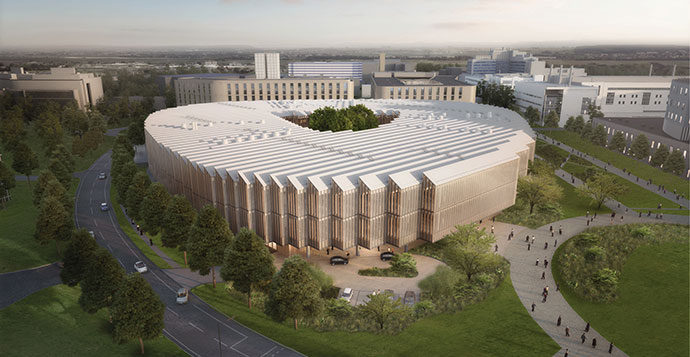Six years ago, we published "Transformation: From A to Zed," about a major reorganization at AstraZeneca that would "place science at the heart of everything we do." Today that heart’s still in the right place, even as the places the science takes place continue to transform, divide or blend like molecules under a microscope.
From South San Francisco to south of Gothenburg, Sweden, AstraZeneca’s family of sites was busy even before a strategic realignment of the company was announced in January. New and expanded campuses — including a major R&D and global headquarters campus in Cambridge, UK, and a recent expansion at MedImmune in Gaithersburg, Maryland — are ramping up, reflecting a focus on sustainability and the company’s iWork philosophy, an activity-based working approach that embraces industry best practices when it comes to workplace.
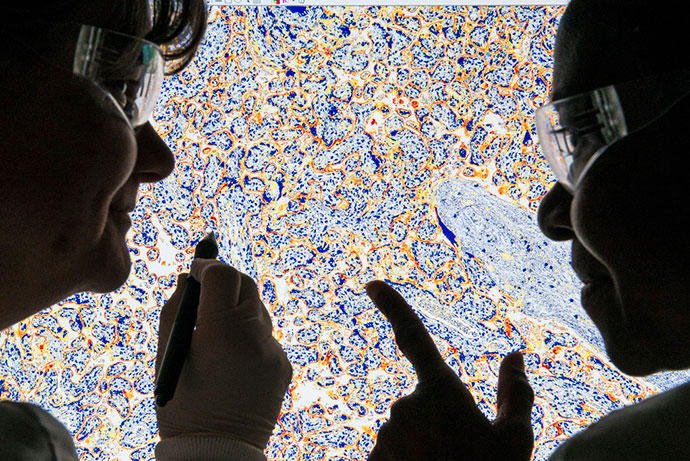
Speaking to me from just outside Manchester in the UK last month, Cory Matthews, head of real estate and asset strategy for AstraZeneca, shared some insights into the 150-country, 35-million-sq.-ft. real estate portfolio he and seven fellow real estate professionals serve in order to keep things humming at a company that employs 64,600 worldwide and saw 2018 revenues totaling $22.1 billion.
The team was formed with a regional approach involving a few central strategy leaders and then divisions in the Americas, EMEA and APAC. Now, says Matthews, "we’re in the process of transforming, being more aligned with our businesses to better serve them. We’ve moved from a pure geographic delivery model to a hybrid with business partners aligned and single points of contact for planning and strategy across an entire portfolio of a business unit."
The real estate pros set strategies, look at performance, look at the analytics and state of all the property in terms of performance factors such as space, cost, fit-for-purpose match and age of a facility. "We bring that intelligence, engage with the business and that gets our foot in the door," Matthews says. "With that information, the business shares what’s going on with them, then we lead with a list of opportunities to realign because of change, or opportunities we see going forward that they may not see. Marry up those two and you have a good plan going forward. You bring things in line, and also challenge the business at the same time."
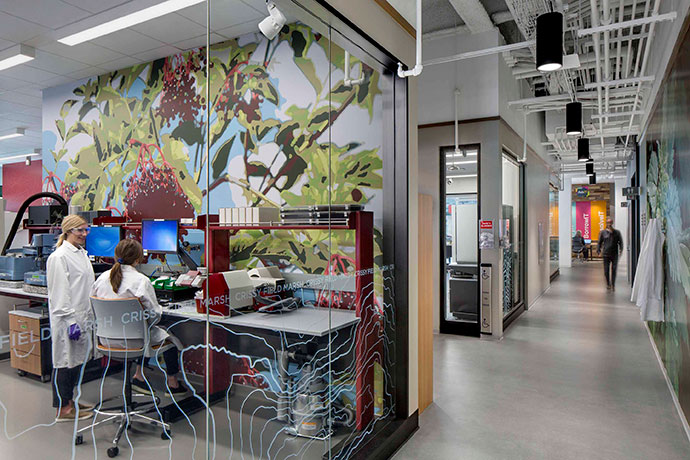
Some staff still are geographically embedded in major hubs, building relationships and local analysis from strategic spots in major AstraZeneca markets such as the U.S., UK and China, where the company among other projects has opened its China Commercial Innovation Centre in Wuxi, Jiangsu Province. But the team works from a central pool of global resources, sharing the workload, with no regional or geographical limitations. "The business partners are the ones driving the portfolio and asset strategy," Matthews says.
Asked about the role the team plays in site selection, planning and design for ongoing projects in the U.S., UK, Maryland, Poland, Algeria, Spain and other locations, he says, "The real estate team runs all the site selections, and we do them all the same."
When company leaders decide which market they want to be in, various factors such as talent and taxation come into play. Once that area is chosen, he says, "We first define all the requirements of the business, really challenging the business when it comes to space and what they need — there’s a traditional mindset versus what you need. It’s about how you work, and doing a work style assessment."
Armed with that information, the real estate team works with brokers on search requirements from an evaluation matrix that takes into account such business criteria as location and quality of building; amenities, proximity of local stakeholders and commuting patterns. Once a shortlist and then a preferred selection emerge, "We put it in a business case, write it up, and work with the business hand in hand," Matthews says, referencing the opening of a new site in South San Francisco where three buildings were in play before the final choice was made to build at The Cove at Oyster Point, near other big pharmaceutical firms. (Read Site Selection’s recent interview with Matthews’ colleague Martin Sharpless about that project’s site selection and ramp-up processes.)
Green Is As Green Does
Sustainability continues to be a company priority: AstraZeneca aims to be energy neutral, carbon neutral and water neutral by 2025, and in 2018, for example, had reduced its global water footprint by 8 percent from 2015, to 4 million cubic meters, and reduced its global greenhouse gas emissions by around 8,000 metric tons. For the real estate team, such priorities also are placed in the larger health and wellness context of workplace strategy and design.
"Investments have to make good business sense," Matthews says, and can be pursued in situations where green measures can have an impact on energy use and reducing strain on local resources. Green for green’s sake is not necessarily the best approach. "Green leases, for example," he says. "We don’t actively pursue them as a corporate strategy. It doesn’t make good business sense all the time, and it’s only a small piece of the overall pie."
That said, sustainability is part of creating a great place to work. The AstraZeneca global real estate team acts as a consultant to that workplace strategy, implementing and managing changes, and acting as a conduit for best practices.
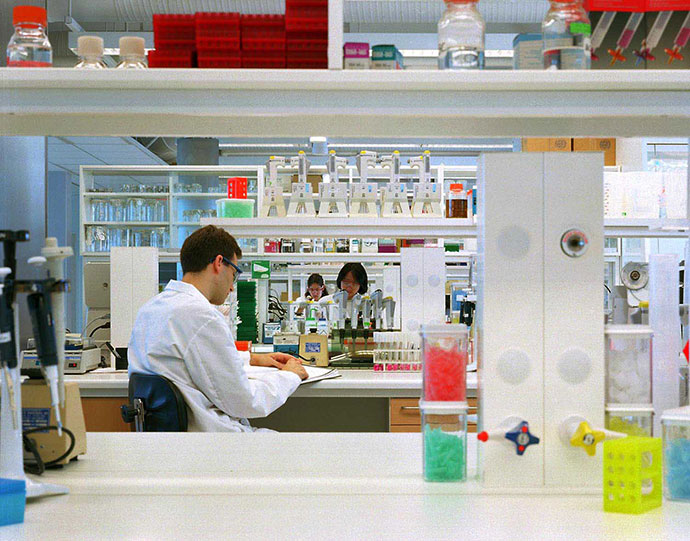
"We make sure we share those values," he says. "Some are specific to sustainability, and some are more general. We want to be more energy efficient. We want a sustainable workplace that is flexible and adaptable to the needs of a dynamic business, and where we don’t have to tear down walls and change electrical every time we do that."
R&D Evolves
The model for biopharma R&D operations has evolved dramatically. How does the AstraZeneca team keep things flexible enough to accommodate new directions?
"R&D is certainly much more complicated," Matthews says. It begins with internal reorganizations such as the shift a couple of years ago from being organized by small molecule vs. large molecule to being organized by therapeutic area. But it also applies to a combination of increased need for collaboration with outside parties and increased need to better utilize real estate.
Organizations such as J&J and Eli Lilly have spun out R&D collaborative units such as JLabs with some success. Asked how his team approaches R&D partnering with institutions or with startup-style outfits, Matthews says, "Our Boston site is a good example. It’s a 400,000-square-foot R&D site in Waltham. Because of changes in the R&D strategy, about half the site was under-utilized. So we’ve implemented a bio hub model, a combination of collaborations on R&D but also facilities. We sublet all the vacant space to various life sciences organizations to build this biohub type of center. That’s a way to foster that collaborative approach."
A similar approach is being pursued in Greater Gothenburg, Sweden, and in the UK, where R&D is concentrating in Cambridge, and soon will be showcased at the new Cambridge Biomedical Campus expected to be finished in 2020. R&D in the UK always had been outside Manchester, Matthews explains, but usage was reduced because of the shift to Cambridge. The biohub model has helped offset costs.
A similar yet differently shaped approach has worked out in Delaware. Delaware won out over Pennsylvania when Astra and Zeneca needed an HQ location after merging in 2000, but strategic moves and growth in other areas caused the employee numbers to dwindle from 6,000 at one time to around 1,500. "We had double the space we needed," Matthews says of the four-building, 70-acre campus.
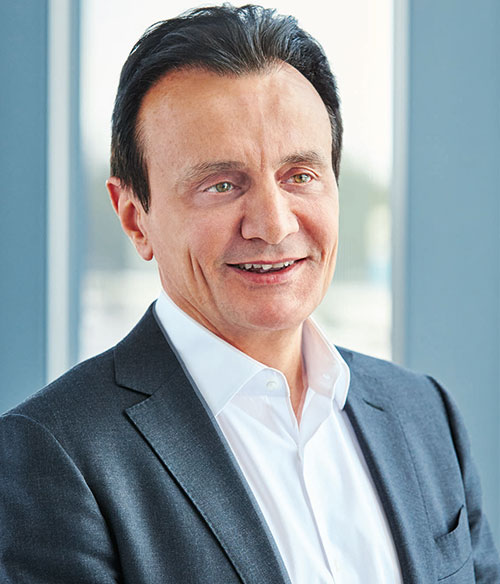
“We are entering what we expect will be a period of sustained growth for years to come, which is why we have decided to more closely align our R&D and commercial operations."
His team’s solution was a sale-leaseback strategy that delivered $50 million in proceeds and tens of millions of dollars in tenant improvements to self-fund the two buildings AstraZeneca retained, while selling off the others. Now the remaining office has been "completely reinvented," he says, and a once-gated corporate campus is opening up into a mixed-use development now being shepherded through approvals by Delle Donne & Associates. AstraZeneca has saved $2.5 million a year in operating costs, and its employees will benefit from the amenities streaming into the neighborhood. "It’s really a win-win," he says of the award-winning project.
While change is a constant, and consolidation often means closures (such as at biologics manufacturing sites in Longmont and Boulder, Colorado), it’s not all about asset disposition or repurposing. The new Cambridge Biomedical Campus (CBC) in the UK that will serve as global HQ and an R&D hub will house 2,500 employees. But the collaborative vision appears to have further facility implications: The company’s recently published annual report stated, "Our longer-term vision is to have our nonlaboratory-based Cambridge colleagues co-located on the CBC and near our key scientific, research and clinical partners. We are now updating the overall master plan for the site and the next stage will be the development of an office building opposite our R&D centre that can accommodate an additional 1,000 people."
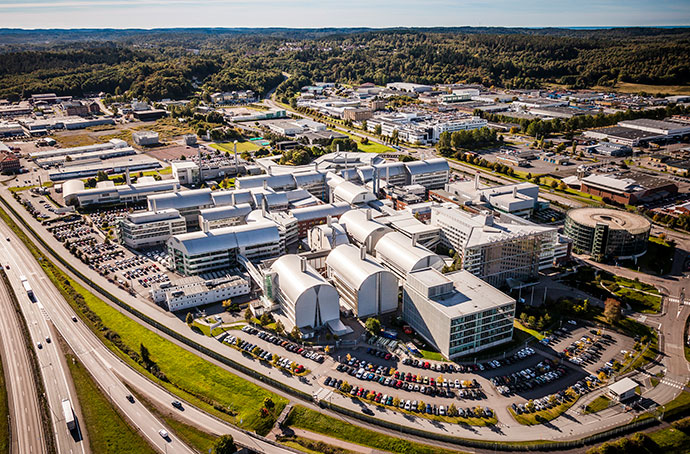
It’s still too early to tell how the organizational changes announced in January will play out at sites, as the company creates therapy area-focused R&D units responsible for discovery through late-stage development for biopharmaceuticals and for oncology "with dynamic resource allocation across the company’s pipeline" and mirrored commercial units. But one thing’s for sure: It’s about growing smarter as well as bigger.
In a way, just as biophilic designs at the new San Francisco site and elsewhere seek to catalyze organic innovation, the global organization seeks to embody the efficiency of the molecular structures its scientists explore every day. Thriving health is the goal in both cases.
“We are entering what we expect will be a period of sustained growth for years to come, which is why we have decided to more closely align our R&D and commercial operations," said Pascal Soriot, AstraZeneca CEO, in January. "This new structure will support growth and sharpen the focus on our main therapy areas, speeding up decisions and making us more productive in our mission to bring innovative medicines to patients."
Which is, after all, what all these buildings are for.
